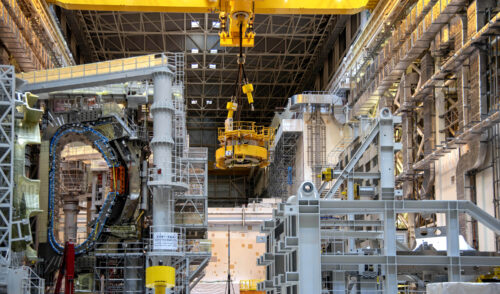
MOX Fuel for Japan
back to contentsThis has been announced by Igor Merkulov, Deputy General Director at the Mining and Chemical Plant (MCP). “We are holding talks with Japan on MOX fuel delivery,” Mr. Merkulov said. He did not specify what arrangements the parties had made. At present, some of the Japanese thermal neutron reactors use MOX fuel fabricated by France’s Areva NC at its MELOX factory in Marcoule, South-Eastern France.
In 2015, MCP officially launched the commercial production of mixed oxide fuel (MOX fuel) for the BN-800 fast-breeder reactor operating at Beloyarsk Unit 4. MOX fuel can also be used in thermal neutron reactors, which now constitute the bulk of the global nuclear energy industry. Production of MOX fuel for fast-breeders was organized under the sponsorship of the Next Generation Nuclear Energy Technologies 2010–2020 federal program.
The production of pelletized MOX fuel is based on the procedure developed by VNIINM, in the course of which powdered ingredients are mixed by whirl grinding to be later pressed and sintered into pellets. The process uses pulverized uranium dioxide and plutonium to produce ready-made MOX fuel assemblies.
In MOX fuel production, Russia has outperformed even the USA. The latter suspended the construction of a MOX fuel plant, although it was started five years earlier than the one in Russia and had taken 7.7 billion dollars (vs. 2.5 years and 240 million dollars spent by Rosatom on a similar project).
The Mining and Chemical Plant is a part of Rosatom’s nuclear and radiation safety division and has a federal status. The plant is the Group’s key source of next-gen technological solutions for closed nuclear fuel cycle (CNFC). MCP is the world’s first nuclear facility to simultaneously focus on three technology-intensive CNFC processes – namely, storage and reprocessing of spent nuclear fuel, as well as fabrication of MOX fuel for fast-breeder reactors.




